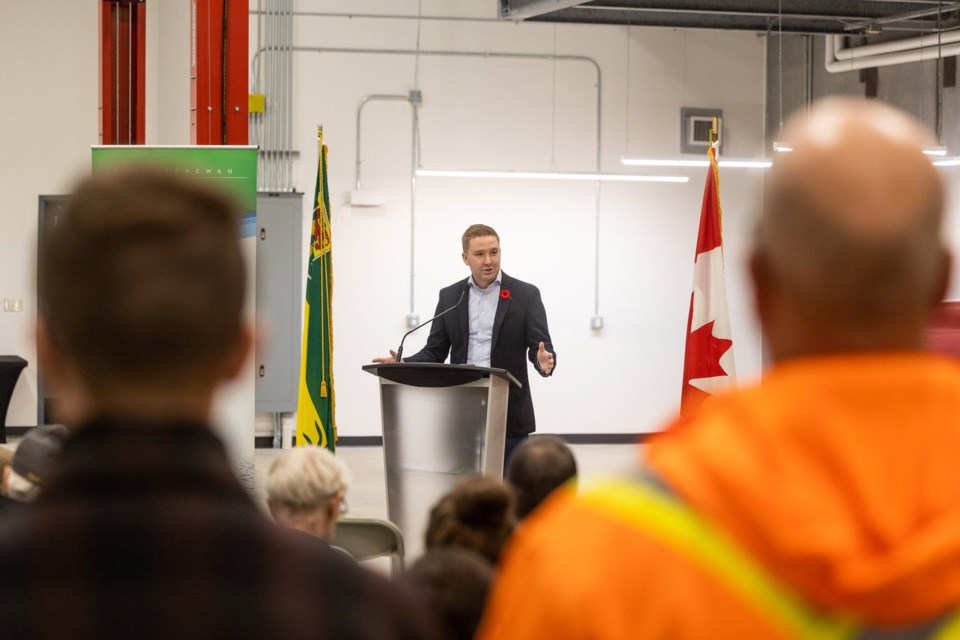SASKATOON - The Gardiner Dam has been reshaping Saskatchewan waterways — and lives and livelihoods — since it opened in 1967.
But a 10-year plan to use the dam and Lake Diefenbaker to more than double the province’s irrigation capacity is now more than two years behind schedule, and is just getting off the starting block.
This fall, the dam has opened a new head office, making it easier for workers from the province’s Water Security Agency to monitor the dam, get training and do regular maintenance and repairs.
Speaking at the new office, Minister Responsible for the Water Security Agency Jeremy Cockrill said the $6 million upgrade was badly needed.
“Drinking water for roughly 60 per cent of Saskatchewan’s population comes through this dam,” he said. “It’s very important. We have a number of staff that work here each and every day. So what this office investment does is it really gives a better working space for the people and equipment that work for the Water Security Agency, keeping the Gardiner Dam running.”
The new office is only a fraction of the work the government has planned at Lake Diefenbaker.
In July 2020, Premier Scott Moe announced a $4 billion irrigation expansion project at the site to take place over the next decade, culminating in hundreds of thousands more acres of Saskatchewan land getting irrigation from the lake.
At the time, the government said work would begin “immediately, to stimulate the economy.” The first phase of the project was to focus on the rehabilitation and expansion of the Westside irrigation canal system, which the government said was “one of the most shovel ready irrigation projects in the province.”
In all, the project was expected to create around 2,500 construction jobs annually for 10 years.
Nearly two and a half years later, Cockrill said the project remains in its infancy — focused on consulting with producers and local communities on both sides of the dam.
He said the dam was originally built with irrigation in mind, and that producers want to see it used to its full potential.
“We look forward to figuring out how we expand going forward, but there is some pretty exciting potential for Saskatchewan,” he said.
According to Cockrill, this project — like many other large infrastructure projects — was slowed by of the COVID-19 pandemic, since people were not able to meet in person and visit sites.
Now the government hopes to make some “pretty significant progress here in the next few years” and get back on track with the 2030 Growth Plan, he said.
“What we’re seeing is kind of a restart on that engagement."




